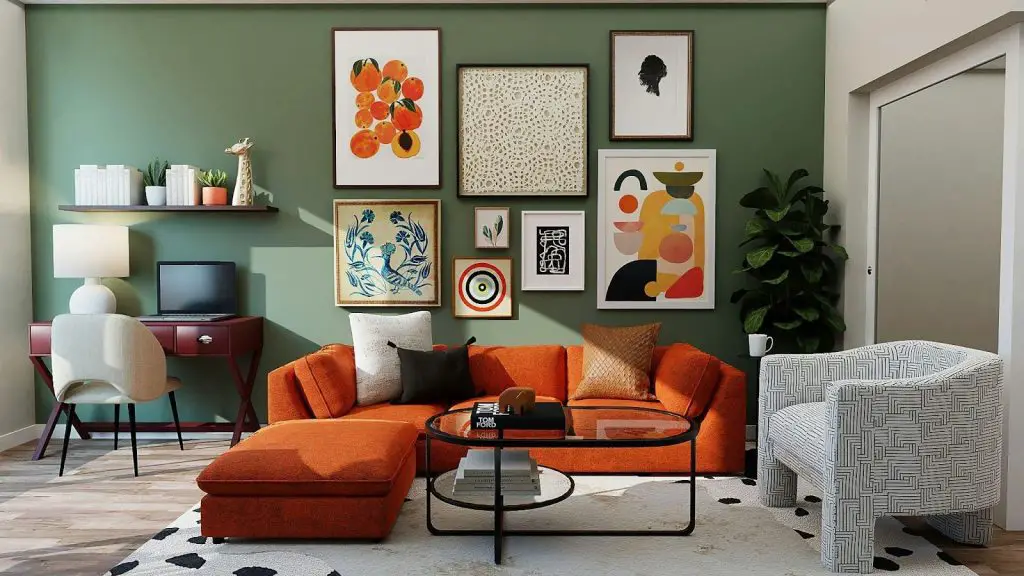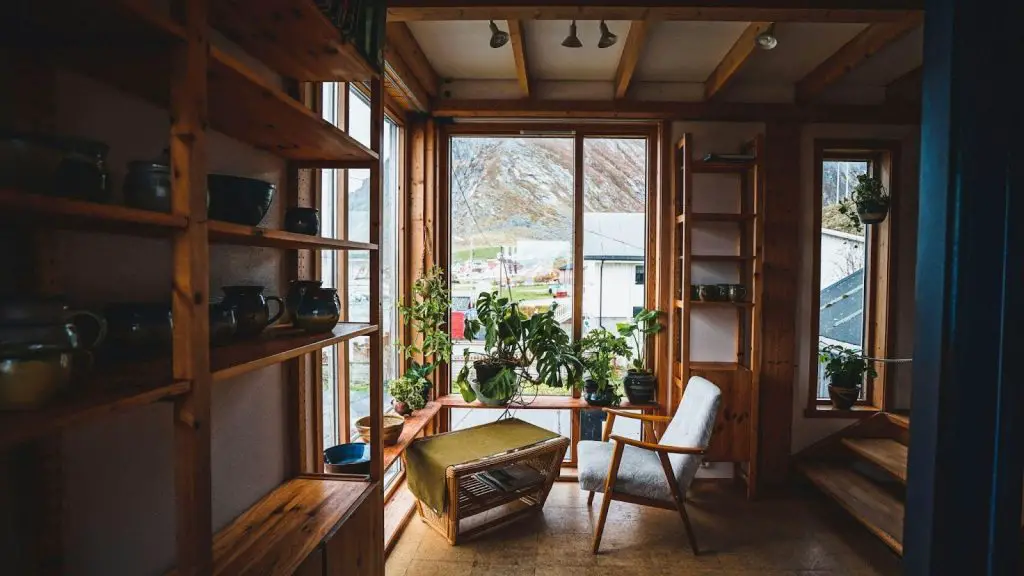
A space doesn’t need a full redesign to feel elevated. The smallest choices—texture, lighting, scent, or accents—can shift the entire mood more effectively than swapping furniture or repainting walls. When you approach design as a sensory experience rather than a visual one, tiny decisions become the most powerful style tools. Here’s how subtle elements reshape a room’s atmosphere without major changes.
Table of Contents
Lighting: The Fastest Way to Change a Mood
Lighting acts as the emotional control panel of any space. Most people rely on overhead fixtures, but layered lighting is what actually defines the ambiance.
Accent and Task Lighting Matter
Table lamps, sconces, floor lamps, and backlit shelving add depth and warmth. A cold room lit only from above can become inviting with one well-placed low-glow lamp in the corner.
Warm vs Cool Bulbs
Warm lighting creates relaxation, while cool tones boost clarity and alertness. Swapping bulbs is an easy, low-cost shift with a noticeable impact.
Candlelight for Atmosphere
Even when unlit, candles suggest warmth. When grouped or placed near reflective surfaces, they add softness and movement to the edges of the room.
Fabrics and Texture: Touch Changes Perception
How a material looks and feels influences how a room is experienced. One thoughtfully chosen texture can rebalance the entire space.
Layered Textiles Create Depth
Throw blankets, new cushion covers, or a textured ottoman instantly add visual interest. Texture prevents a room from feeling flat or unfinished.
Rugs Redefine Zones
A single rug can connect scattered furniture and give structure to a seating area. It adds warmth, reduces noise, and changes the feel of the floor.
Natural Fibers Shift Temperature and Tone
Materials like linen, wool, cotton, and jute bring calm. Velvet, boucle, or silk add softness and subtle luxury. Texture can influence mood as much as comfort.
Color Placement Without Repainting
You don’t need new walls to change a room’s energy. Strategic accent colors can alter the space without a paintbrush.
Accent Pieces as Mood Anchors
A throw pillow, vase, lamp base, or framed print can introduce a new tone. Soft shades create calm, while bold ones add personality and movement.
Tone Balance Through Accessories
If a room feels cold, warmer colors in textiles or artwork can compensate. If it feels visually heavy, pastel or neutral elements can lighten it.
Small Areas, Big Influence
Door frames, shelf backings, and window trims are underrated surfaces that can quietly reshape a room with minimal effort.
Scents: The Invisible Mood Enhancer
The atmosphere isn’t just visual—scent can define how a room feels before anything is seen.
Scent as a Design Element
Fragrance is often treated as optional, but it has the same emotional pull as lighting or color. Fresh scents energize, soft ones calm, and wood notes ground a space.
Placement and Scent Flow
Candles on side tables, diffusers by the entry, or oils near seating areas all influence how a room is experienced depending on circulation.
The Power of a Quick Refresh
A light mist of room spray can reset the atmosphere in seconds without overwhelming the space. It’s the quickest invisible mood shift you can make.
Wall Art and Visual Accents
What you hang, lean, or stack against a wall changes how a room feels, even without structural updates.
Gallery Walls and Focal Points
An oversized print, a sculptural piece, or a grouped collection of frames can define the emotional tone of an entire wall.
Mirrors Add Light and Space
Mirrors bounce light and widen sightlines, making rooms look brighter and larger. Even a small one can transform a wall’s effect.
Leaned vs Mounted Decor
Leaning art or panels against a wall creates a relaxed, lived-in tone compared to perfectly centered hanging pieces.
Greenery and Natural Elements
Plants do more than freshen the air—they soften edges, break up hard lines, and bring movement.
Size and Placement Set the Mood
Tall plants frame windows or corners. Smaller ones add life to side tables and bookshelves. Trailing vines soften shelves and ledges.
Natural Materials for Balance
Wood, stone, clay, and rattan add tactile grounding. Even a small bowl, planter, or side table can shift the energy of a space.
Seasonal Variations
Swapping out branches, dried arrangements, or greens throughout the year keeps a room feeling current without a big overhaul.

Photo by Rogério Toledo on Unsplash
Furniture Arrangement: Micro Shifts, Macro Results
You don’t need new furniture to reinvent a room—small repositioning has a major effect.
Angles Change the Flow
Even a slight rotation of a chair toward a window or table makes a room feel more open or conversational.
Negative Space Matters
Pulling furniture away from the walls or clearing crowded corners creates breathing space. Empty areas contribute to mood too.
Grouping Items with Purpose
A chair paired with a lamp and side table becomes a reading nook. Clusters arranged in odd numbers feel relaxed and intentional.
Personal Objects as Atmosphere Builders
Objects with meaning shape the emotional character of a room, not just its visuals.
Sentimental Decor Adds Warmth
Stacks of books, favorite photos, or collected pieces make a space feel grounded and personal rather than staged.
Rotating Pieces Creates Freshness
Bringing in seasonal items or changing placements prevents visual stagnation and keeps the space dynamic.
Minimalist vs Curated Clutter
Too many small objects overwhelm, but a few intentional pieces add personality. The key is editing with purpose.
Sound and Sensory Layering
Sound influences how a room feels just as much as what you see.
Soft Sounds for Calm
Ambient noise, light music, or water features can soften silence and shape emotion in subtle ways.
Sound Absorption from Fabrics
Curtains, rugs, and cushions absorb echo and soften acoustics, especially in minimalist spaces.
Silence as a Choice
Eliminating humming electronics or noisy decor can immediately make a room feel calmer.
Small Storage Solutions That Affect Mood
Clutter instantly affects how a space feels. You don’t have to eliminate things—just contain them well.
Baskets, Bowls, and Trays
Organizers on entry tables, shelves, or coffee tables give items a home and make the room feel intentional rather than scattered.
Open vs Hidden Storage
Visible storage with texture adds charm, while closed compartments maintain a cleaner, sleeker mood.
Rotating Items Out of Sight
Keeping some belongings stored away prevents visual overload and keeps a room from feeling crowded.
Final Thought-Free Spaces Feel Better
The atmosphere is built through harmony—light, smell, sound, touch, and color working together. When each element is chosen with intention, even in small doses, a room stops functioning purely as a space and instead becomes a feeling.
- Mood Makers: Small Details That Transform a Room - October 17, 2025
- Why Ancient Civilizations Elevated Their Beds - October 17, 2025
- Why Elevate Your Bed With Wooden Blocks? - October 17, 2025
